When the weather gets nice and taking that bike ride with the family becomes a reality again, so does the need for an organized way to store your bikes when you get home. If you have a smaller garage and lots of hobbies, you know how important it is to keep everything straight. But with raising kids, there is an element of independence that we also want to foster in our children. Striking the balance between having easy access to things, but still using the space well can be challenging. Thankfully, there are storage options for bikes that can be kid-friendly.
In general, there are 5 styles of garage bike storage used for kid’s bikes: Wall-mounted racks, free-standing racks, floor parking racks, ceiling hooks, and ceiling hoists. The age of your kids and your storage goals will determine which style is best for your family and your garage.
Different brands of bike racks compete with their creative designs and utility to accommodate a variety of bike sizes and styles. This is excellent news for parents, as kids tend to grow quickly and their bike sizes and styles will change over the years.
Wall-Mounted Bike Racks
Wall-mounted bike racks are one of the simplest ways to store bikes off the floor. While the features differ slightly, wall-mounted bike racks can be broken down into two categories based on how the bike is positioned on the wall: parallel or horizontal racks, and vertical hanging racks.
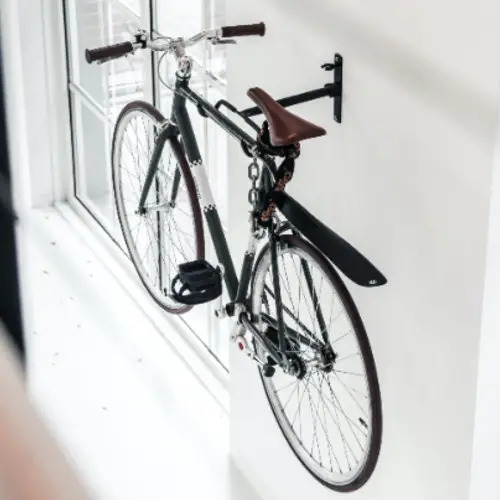
Parallel Wall Mount 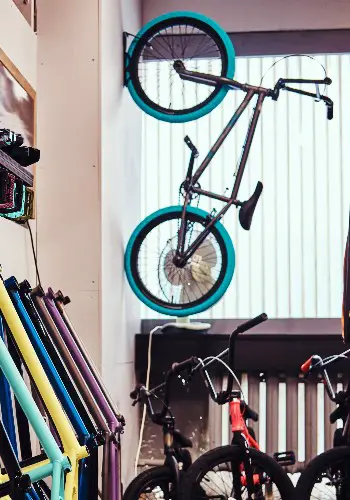
Vertical Wall Mount 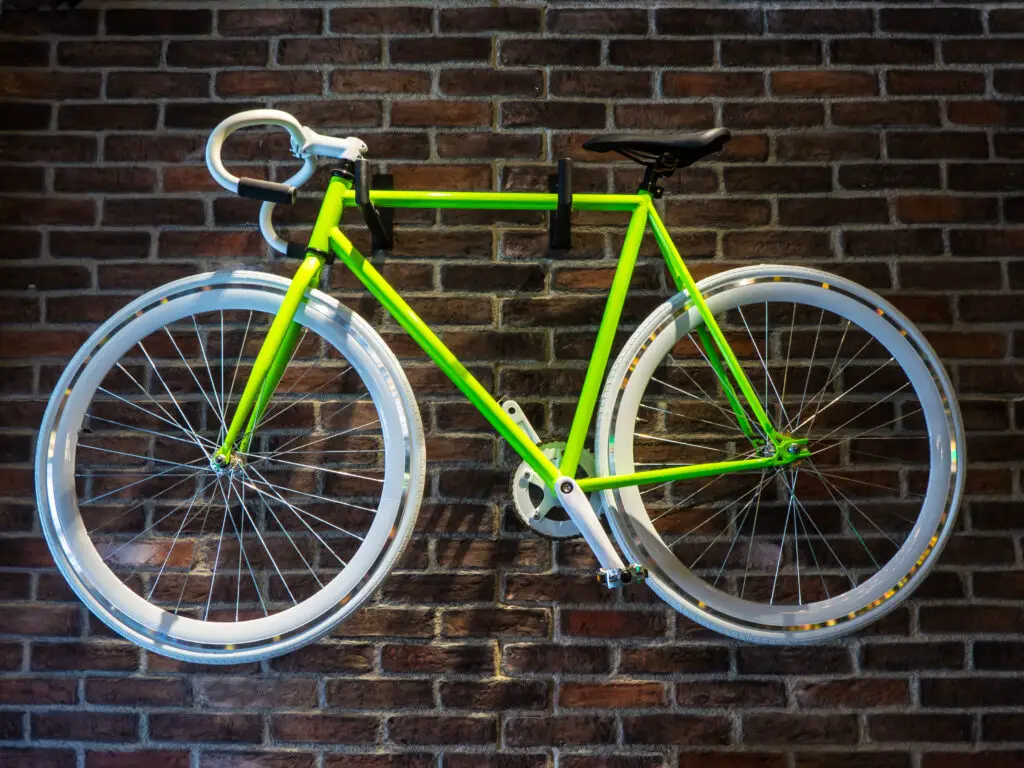
Parallel Wall Mount
Parallel Hanging Wall-Mounted Bike Racks
In general, parallel hanging bike mounts are designed to hold the bike up by the frame suspending it off the floor. The rack or hooks will need to be drilled into a wall stud, as drywall alone won’t support the weight of the bike. The adjustment features on these are intuitive. On many, the forks or rests move to accommodate the style of the frame (mountain bikes and cruisers alike!) On others, you can also determine how far away from the wall you would like the rack to extend, leaving room for pedals, training wheels, or pegs that might otherwise scuff up your walls.
Wall-mounted bike racks also give you the freedom to determine how far off the ground you would like your bike to be positioned. For example, if you have older kids, with a little muscle, they may be able to lift their bike by the frame and place it on the hooks. This style is a win-win – it saves garage space and can be kid-friendly for putting bikes away independently.
Vertical Hanging Wall-Mounted Bike Racks
Vertical hanging bike racks also attach to the wall by drilling into the stud but hang bikes upright by their front tire. This type generally saves garage space differently than a parallel rack and has different features to consider. Some brands are a simple clip that attaches to the wall that the front tire can be positioned into. Other styles have a vertically-mounted track that the front tire slides into with a hook that can be positioned to the bike in place.
In most cases, this type of rack will be harder for a little one to use, as some coordination and strength are required to tip a bike up on its back tire and lift it by the handlebars to hang on the wall. There are some creative designs, however, that eliminates the lifting and could be easier to use for some kids to use. Check out this one here.
Standing Bike Racks
If you are not keen on permanently drilling holes into your garage walls, there are other options for bike storage. Standing bike racks can also accommodate bikes of a variety of sizes and styles, including your kids’ bikes. While the rack might still take up a small amount of floor space, they save room overall by getting the bikes off the ground. Standing racks can be placed in empty corners with less wall space in a garage, such as behind a side entry door or near the water heater.
These also come in a few different styles and some can hold more than one bike. The most common are free-standing and wall-leaning racks.
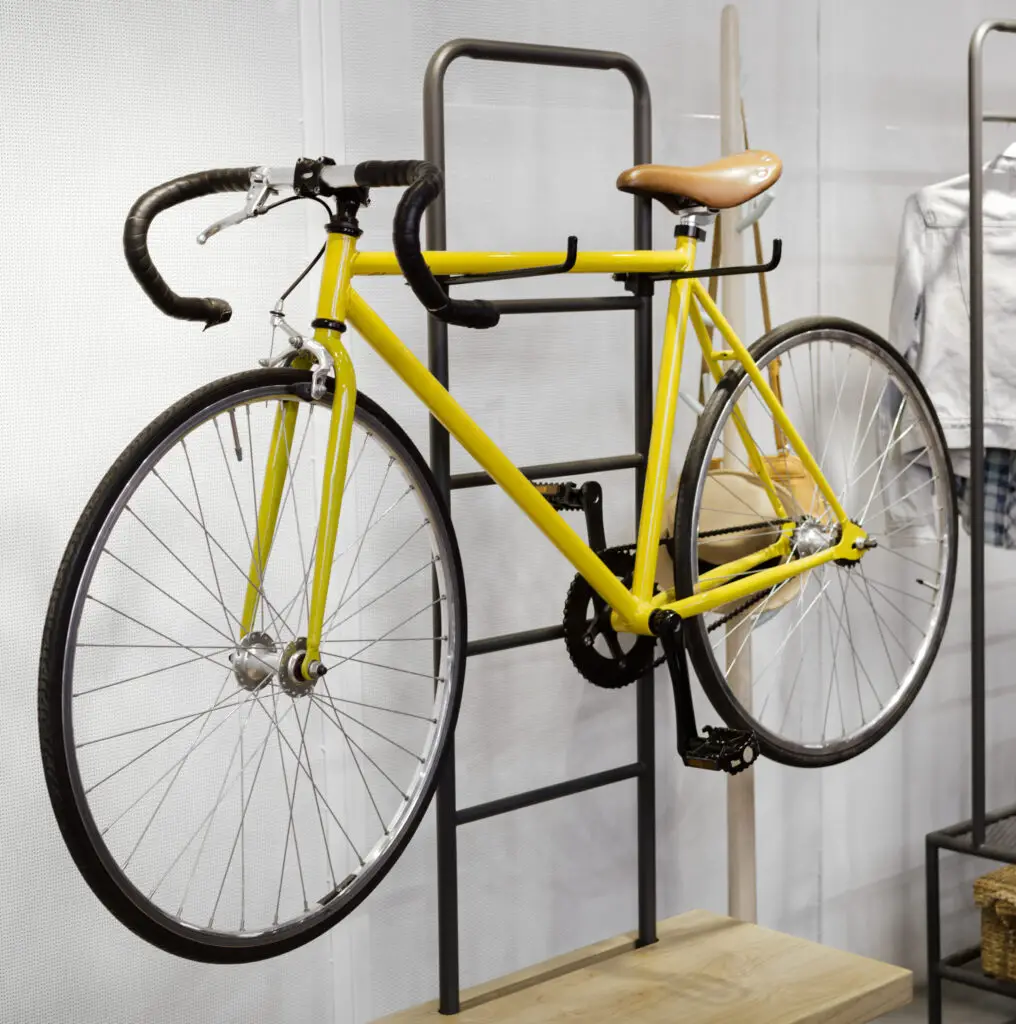
Free-Standing Bike Rack 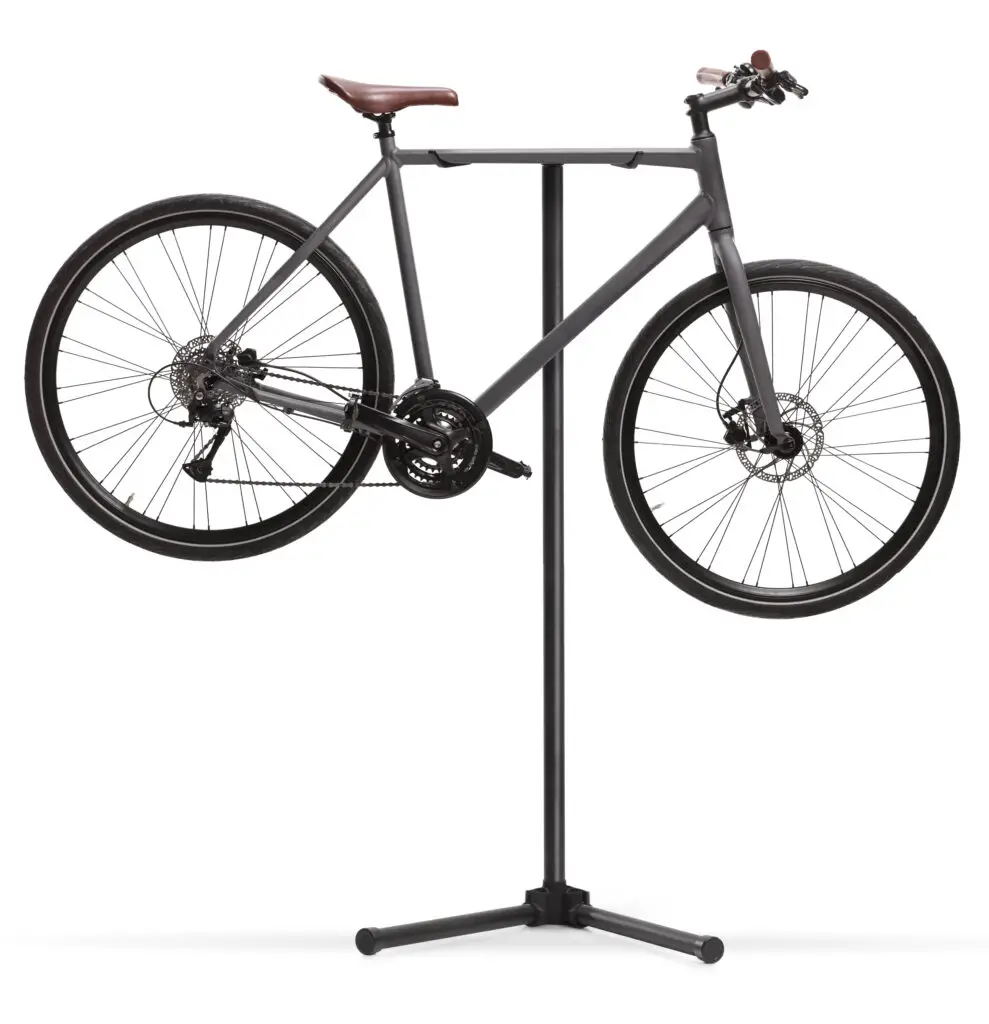
For Storage or Repairs
The considerations for kids putting their own bikes away with this type of stand are similar to the parallel wall mounts – if the child is tall enough and strong enough to lift the frame with two hands onto the rests, this style will work. After discussing this type of rack with a bike shop worker, he told me that he had used a leaning rack for his personal bikes for 10 years and never had it fall over once.
There was one other rack we wanted to highlight here for its ingenuity: The Bike Nook. This design was made with convenience in mind and could also be an excellent way for a child to independently put their bike away when they are finished with their ride.
Floor-Parking Bike Racks
This style of bike rack is more about accessibility than saving space. If you have a large garage or compact space isn’t really a concern for you, this is an easy way to keep the kids’ bikes upright and organized. Depending on the type, bikes can be backed in or pushed forward into the rack.
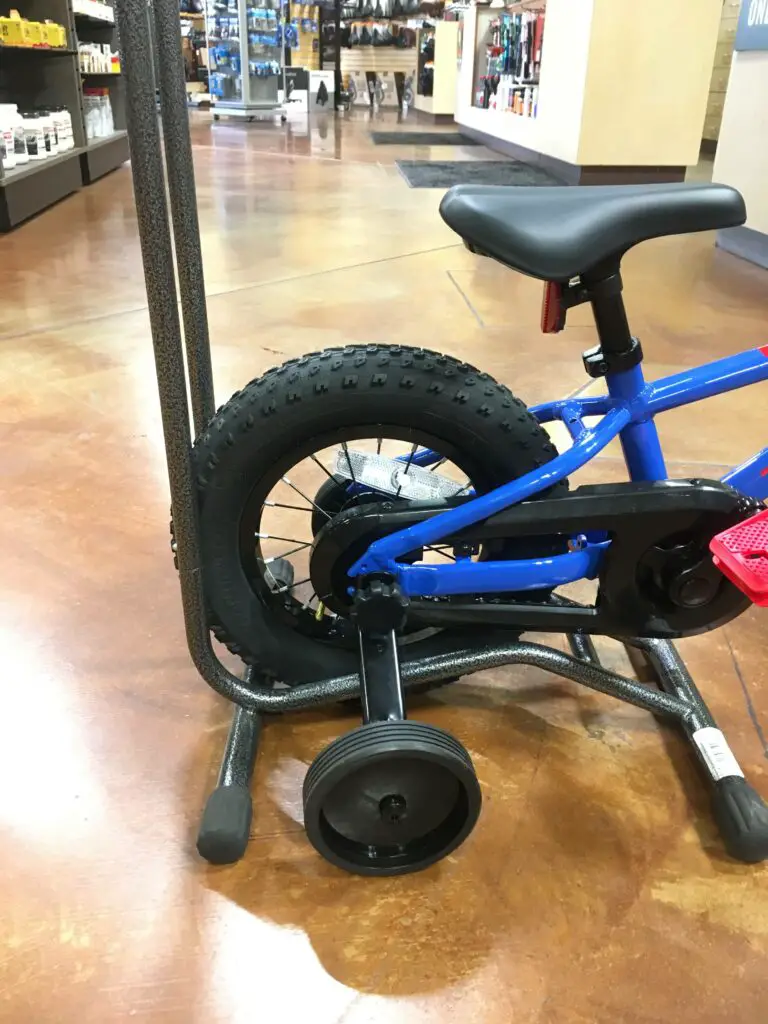
Back-in Style Rack 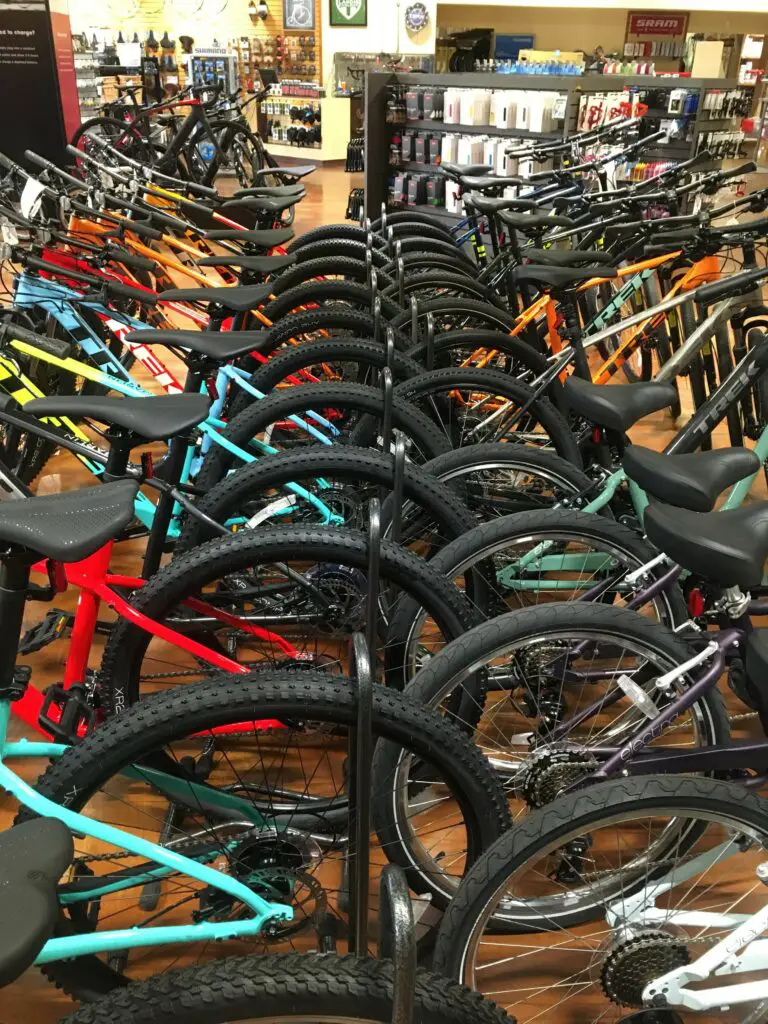
Fits adult-sized bikes as well
Bike storage manufacturers have again been accommodating with how this type of rack can suit any type of bike. And for some brands, like the one pictured above, they can even snap-adjust for tires fatter than the 2 1/2″ average. They also come in single or multiple slots to suit different storage needs.
You truly don’t get any more kid-friendly than this kind of storage. If they can push it, they can park it!
Overhead Ceiling Hooks for Bike Storage
Another off-the-floor storage method for bikes utilizes garage ceiling space. These bike hooks screw into the ceiling joists or attach to other overhead shelving and suspend the bike from one or both wheels. The hooks are usually plastic or vinyl coated to prevent scuffing the rims. These are generally very cost-effective and easy to install.
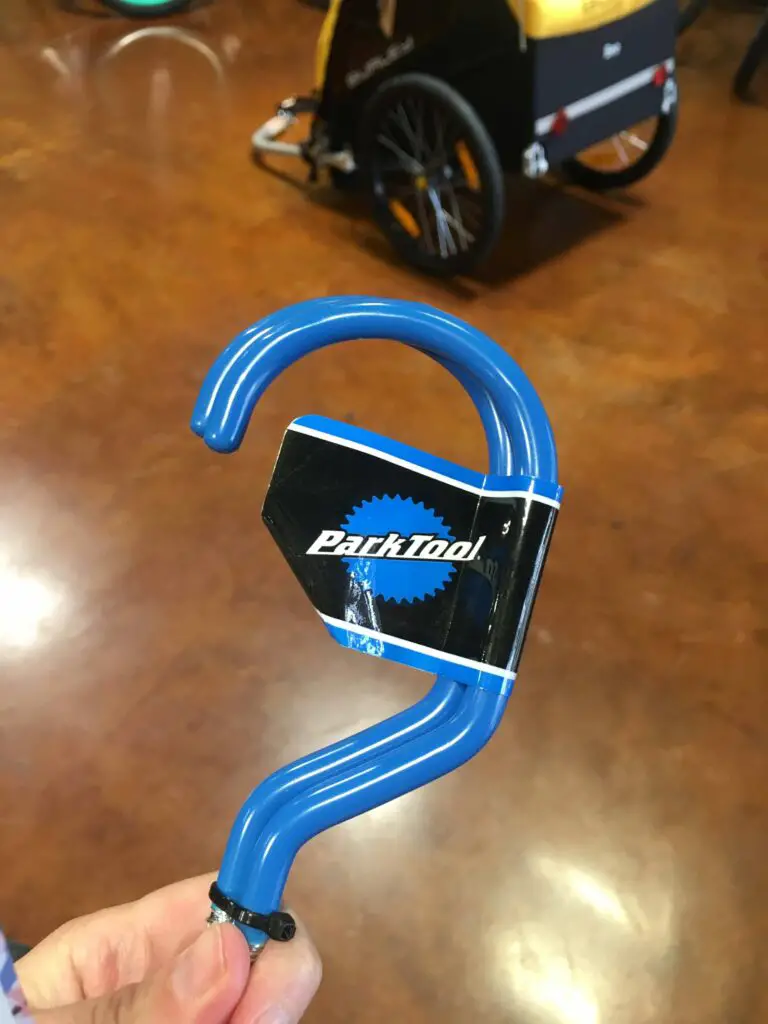
Bike Hooks 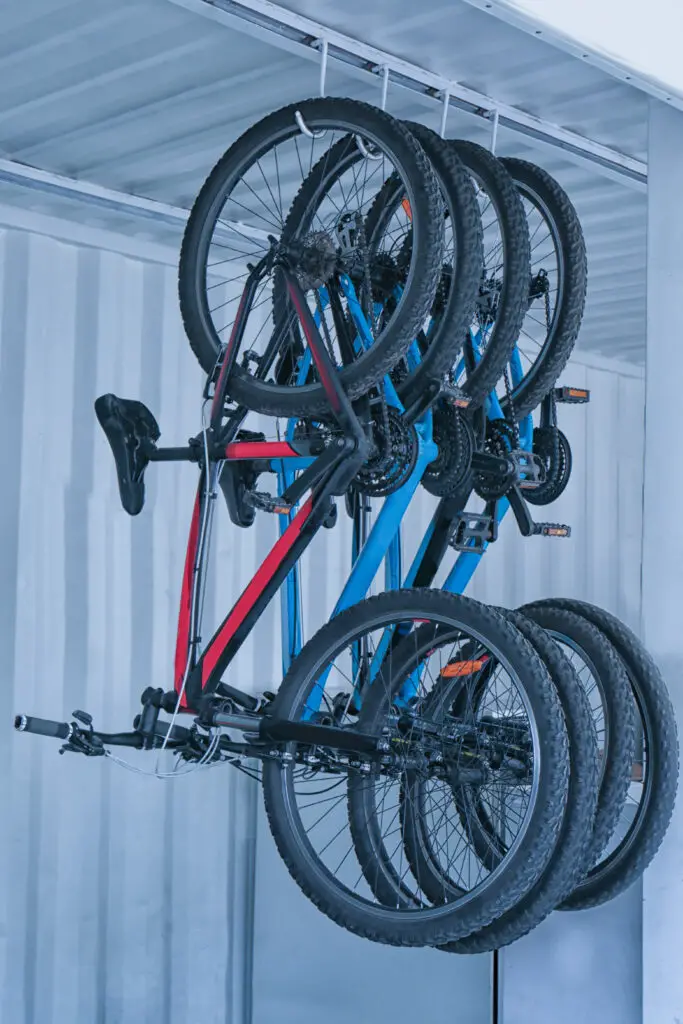
Ceiling Storage
The concern with ceiling hooks is that they are not very kid-friendly. Getting bikes up and down from overhead should be done with great care by an adult. As this takes some extra work, and possibly a ladder, this type of storage is not ideal if the kids want to go bike riding on a daily basis. But if maximizing space is your goal, and weekend rides are your frequency, this may still be an option to look into.
Ceiling Hoists for Bike Storage
This final style of storage also uses ceiling space. A bike hoist uses a pulley system to raise and lower a bike up off the floor. With this system, the bike remains upright, so there is no awkward tipping and flipping over once the bike is down. For the hoist to work safely, however, it will need to be installed correctly per the manufacturer’s guidelines.
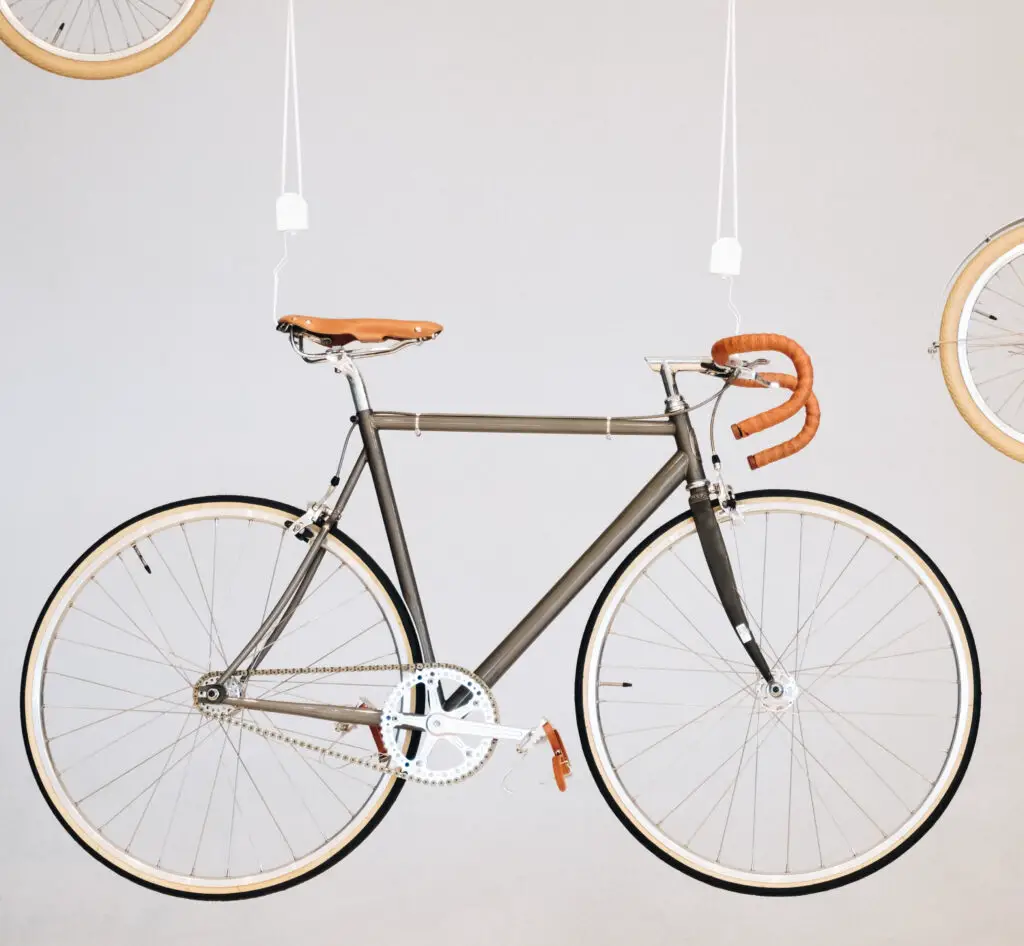
Depending on the age of your kids and the height of your garage ceiling, this could be an amazing option for you. An older kid could manage the pulley, and with the upright placement of the lowered bike, be off adventuring in the neighborhood in just a few minutes. Unsupervised, however, this would not be a good option for younger children.
While a bike hoist does add a layer of convenience to the ceiling storage, there are some other safety considerations to heed – especially if you intend for your older kids use it. For one thing, you need to ensure that the pulley crank is secure when not in use so that people and vehicles underneath aren’t damaged. Check to see if locking features are included and how quickly the bike is designed to descend. Also, be sure to supervise your child use it before they do so independently.
Kids Bike Storage Final Breakdown
| Type of Rack | Installation Required | Storage Used | Positions on | How to | Friendly for |
| Wall Mount Parallel | Drilled into wall stud | Wall | Bike Frame | Two-handed lift from the bike frame | 8 years+ |
| Wall Mount Vertical | Drilled into wall stud | Wall | Bike Tire | Vertically balance bike, clip/ hook in front tire | Adults/ Teens |
| Standing Racks | None | Floor | Bike Frame | Two-handed lift from the bike frame | 8 years+ |
| Floor Parking | None | Floor | Bike Tires | Roll front or back tire in place | 2 years+ |
| Ceiling Hooks | Drilled into ceiling joist | Ceiling | Bike Tires | Position bike vertically or upside down, lift up on to hooks | Adults |
| Ceiling Hoist | Drilled into ceiling joist | Ceiling | Handlebars/ Seat | Attach pulley hooks, pull rope on pulleys, secure rope | 10 years+ w/ Adult supervision |
This table is meant to be a general guideline. For any activity you are teaching independence with, knowing your child and supervising their progress will be where you start. A child’s age and potentially their strength are going to play a big role in which type of storage you choose to let them fly solo with. If space is more of a priority, and you don’t mind doing the lifting, any of the options work well for bike storage for a variety of shapes, sizes, and styles.
Assess your garage, explore your brand options, and you will be on your way to a more accessible or organized space. (Or hopefully, both!)

